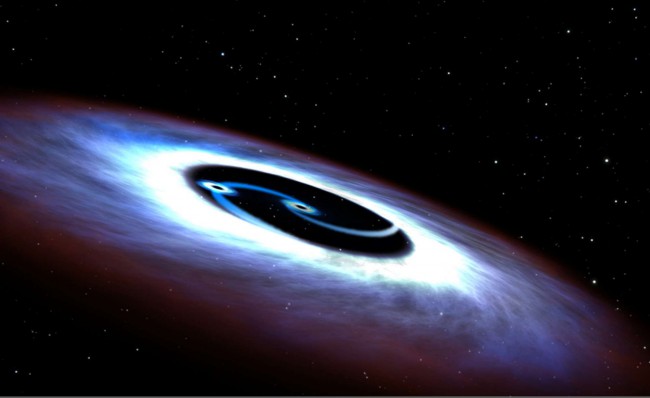
Two weeks ago the participants in the LIGO experiment announced the discovery of gravitational waves that occurred during the collision of two black holes with a mass in 29 and 36 is greater than the mass of our Sun. According to a new study, these two black holes appeared from one supermassive stars whose death caused the gamma-ray burst, registered by scientists.
“This is the space equivalent of a pregnant woman with two twins in the belly,” said Harvard astrophysicist AVI Loeb.
Usually when a massive star dies, its core is compressed into a single black hole. However, if the star rotates fast enough, its core may stretch, took the form of dumbbells, which will appear two black holes. Such a massive star could arise during the merger of two smaller stars. Since such stars will rotate faster and faster, coming closer to each other in a spiral, resulting from their collision a new star will spin very quickly.
After the formation of pairs of black holes the outer shell of the star rushed inside. To produce powerful gravitational wave and the simultaneous gamma-ray burst, recorded LIGO, two black holes should be formed very close to each other, at a distance of one Earth radius, and merge within a few minutes. Thus formed a new black hole then began to absorb the matter around to the same mass of the Sun per second is nourishing substances from the jets that created the gamma-ray burst.
Scientists have recorded the surge after 0.4 seconds after a detected gravitational waves LIGO, and they were from the same part of the sky. However, the European INTEGRAL satellite has not confirmed this signal.
“Even if our detection is a false alarm, future LIGO experiments should be combined with the search for such bursts regardless of whether they occur from the collision of black holes or not. Nature can always surprise us,” said Loeb.
If scientists can prove the relationship of gamma-radiation with the gravitational waves caused by events, this will allow to develop a new method for measuring expansion of our Universe. Detecting the afterglow of such bursts and measuring their red shift, and then comparing the obtained data with LIGO certain distance, astronomers can determine many cosmological parameters.
